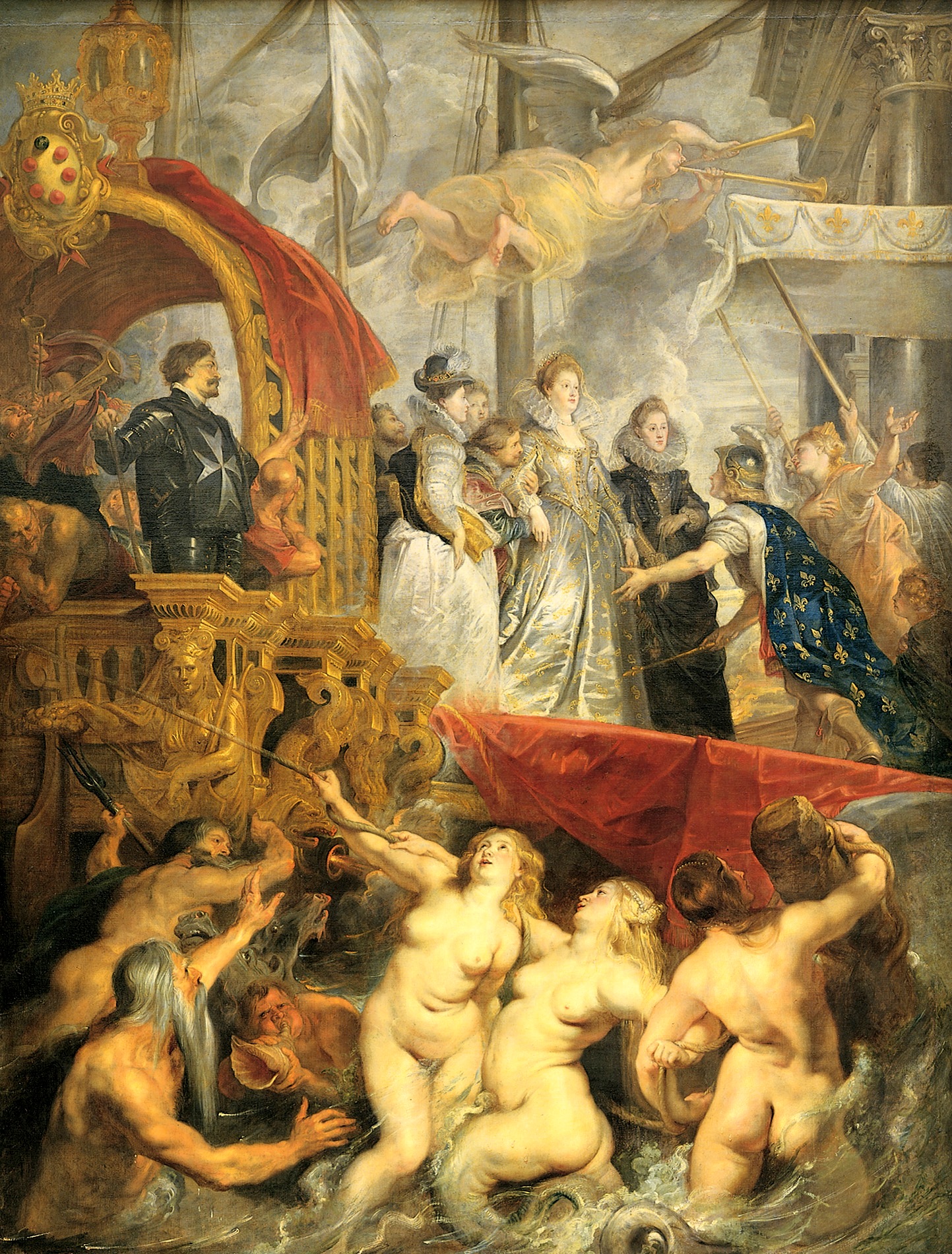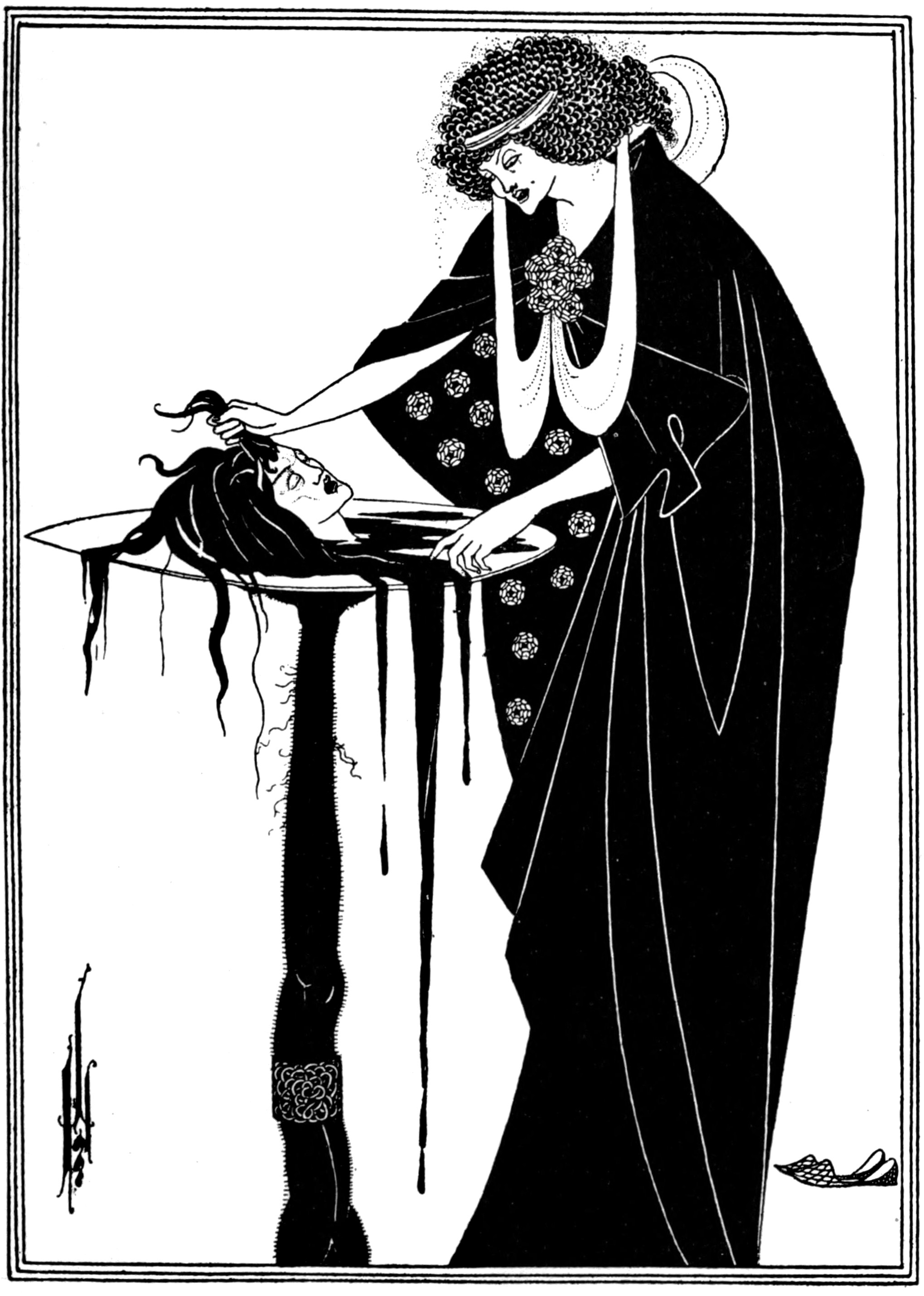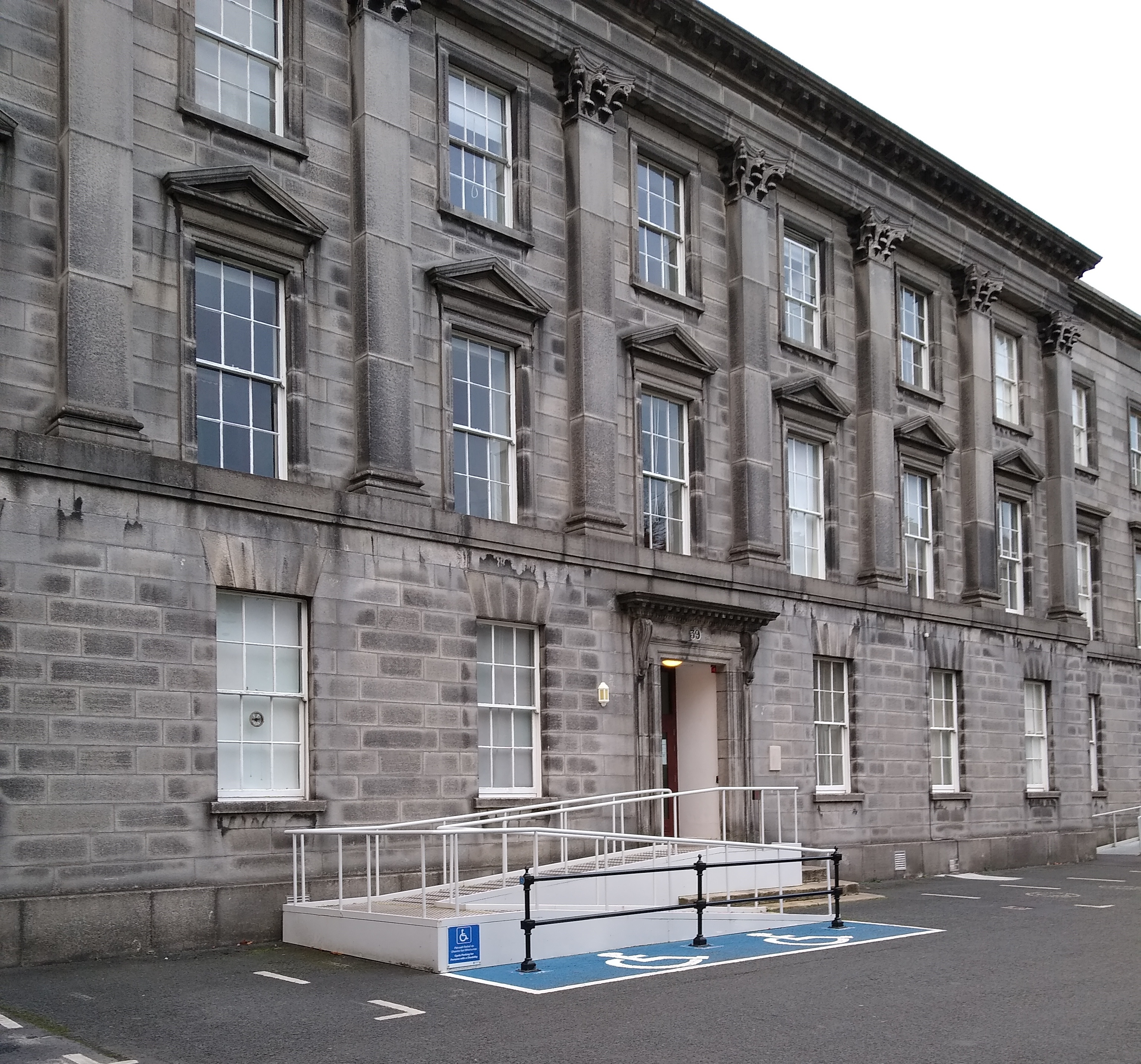|
Robert Ballagh
Robert Ballagh (born 22 September 1943) is an Irish artist, painter and designer. He was born in Dublin and studied architecture at the Bolton Street College of Technology. His painting style was strongly influenced by pop art. He is particularly well known for his hyperrealistic renderings of well known Irish literary, historical or establishment figures. Ballagh grew up in a ground-floor flat on Elgin Road in Ballsbridge, the only child of a Catholic mother and a Presbyterian father who converted to Catholicism, both of whom had played sport for Ireland. He became an atheist while being educated at St Michael's College and Blackrock College. Before turning to art as a profession, he was a professional musician with the showband Chessmen. He met his future wife Betty when she was 16 years old; she died in 2011. He met artist Michael Farrell during this period, and Farrell recruited him to assist with a large mural commission, which was painted at Ardmore Studios. Ballagh re ... [...More Info...] [...Related Items...] OR: [Wikipedia] [Google] [Baidu] |
Dublin Institute Of Technology
Dublin Institute of Technology (DIT, ga, Institiúid Teicneolaíochta Bhaile Átha Cliath) was a major third-level institution in Dublin, Ireland. On 1 January 2019 DIT was dissolved and its functions were transferred to the Technological University Dublin, as TU Dublin City Campus. The institution began with the establishment of the first technical education institution in Ireland, in 1887, and progressed through various legal and governance models, culminating in autonomy under a statute of 1992. DIT was recognised particularly for degree programmes in Product Design, Mechanical Engineering, Architecture, Engineering, Science, Marketing, Hospitality, Music, Optometry, Pharmaceuticals, Construction, Digital Media and Journalism. It was ranked, in 2014, in Times Higher Education's top 100 university-level institutions globally under 50 years old. Influential contributions to policy debates have often placed DIT at the heart of many diverse aspects of public life in Dublin. ... [...More Info...] [...Related Items...] OR: [Wikipedia] [Google] [Baidu] |
Commission (art)
In art, a commission is the act of requesting the creation of a piece, often on behalf of another. Artwork may be commissioned by private individuals, by the government, or businesses. Commissions often resemble endorsement or sponsorship. In classical music, ensembles often commission pieces from composers, where the ensemble secures the composer's payment from private or public organizations or donors. Commissions and visual artist Throughout history, it has been common for rulers and governments to commission public art as a means of demonstrating power and wealth, or even for specific propaganda purposes. In ancient Rome, large architectural projects were commissioned as symbols of imperial glory. The Roman Colosseum for example, was commissioned by Emperor Vespasian. Public statuary was widespread, depicting mythical and heroic figures. The frieze that is carved into the Marcus Column, located at the Campus Martius, depicts the figure of Victory, and would have been co ... [...More Info...] [...Related Items...] OR: [Wikipedia] [Google] [Baidu] |
Hugh Lane Gallery
The Hugh Lane Gallery, officially Dublin City Gallery The Hugh Lane and originally the Municipal Gallery of Modern Art, is an art museum operated by Dublin City Council and its subsidiary, the Hugh Lane Gallery Trust. It is in Charlemont House (built 1763) on Parnell Square, Dublin, Ireland. Admission is free. History The gallery was founded by noted art collector Sir Hugh Lane on Harcourt Street on 20 January 1908, and is the first known public gallery of modern art in the world. Lane met the running costs, while seeking a more permanent home. New buildings were proposed in St. Stephens Green, and as a dramatic bridge-gallery over the River Liffey, both proposed designs by Sir Edwin Lutyens, both unrealised. Lane did not live to see his gallery permanently located as he died in 1915 during the sinking of the RMS ''Lusitania''. Since 1933 it has been housed in Charlemont House. Lane's will bequeathed his collection to London, but an unwitnessed codicil, written in the mont ... [...More Info...] [...Related Items...] OR: [Wikipedia] [Google] [Baidu] |
National Gallery Of Ireland
The National Gallery of Ireland ( ga, Gailearaí Náisiúnta na hÉireann) houses the national collection of Irish and European art. It is located in the centre of Dublin with one entrance on Merrion Square, beside Leinster House, and another on Clare Street. It was founded in 1854 and opened its doors ten years later. The gallery has an extensive, representative collection of Irish paintings and is also notable for its Italian Baroque and Dutch masters painting. The current director is Caroline Campbell. History In 1853 an exhibition, the Great Industrial Exhibition, was held on the lawns of Leinster House in Dublin. Among the most popular exhibits was a substantial display of works of art organised and underwritten by the railway magnate William Dargan. The enthusiasm of the visiting crowds demonstrated a public for art, and it was decided to establish a permanent public art collection as a lasting monument of gratitude to Dargan. The moving spirit behind the proposal was th ... [...More Info...] [...Related Items...] OR: [Wikipedia] [Google] [Baidu] |
The Sunday Times
''The Sunday Times'' is a British newspaper whose circulation makes it the largest in Britain's quality press market category. It was founded in 1821 as ''The New Observer''. It is published by Times Newspapers Ltd, a subsidiary of News UK, which is owned by News Corp. Times Newspapers also publishes ''The Times''. The two papers were founded independently and have been under common ownership since 1966. They were bought by News International in 1981. ''The Sunday Times'' has a circulation of just over 650,000, which exceeds that of its main rivals, including ''The'' ''Sunday Telegraph'' and ''The'' ''Observer'', combined. While some other national newspapers moved to a tabloid format in the early 2000s, ''The Sunday Times'' has retained the larger broadsheet format and has said that it would continue to do so. As of December 2019, it sells 75% more copies than its sister paper, ''The Times'', which is published from Monday to Saturday. The paper publishes ''The Sunday Ti ... [...More Info...] [...Related Items...] OR: [Wikipedia] [Google] [Baidu] |
Euro
The euro ( symbol: €; code: EUR) is the official currency of 19 out of the member states of the European Union (EU). This group of states is known as the eurozone or, officially, the euro area, and includes about 340 million citizens . The euro is divided into 100 cents. The currency is also used officially by the institutions of the European Union, by four European microstates that are not EU members, the British Overseas Territory of Akrotiri and Dhekelia, as well as unilaterally by Montenegro and Kosovo. Outside Europe, a number of special territories of EU members also use the euro as their currency. Additionally, over 200 million people worldwide use currencies pegged to the euro. As of 2013, the euro is the second-largest reserve currency as well as the second-most traded currency in the world after the United States dollar. , with more than €1.3 trillion in circulation, the euro has one of the highest combined values of banknotes and coins in c ... [...More Info...] [...Related Items...] OR: [Wikipedia] [Google] [Baidu] |
Salomé (play)
''Salome'' (French: ''Salomé'', ) is a one-act tragedy by Oscar Wilde. The original 1891 version of the play was in French; an English translation was published three years later. The play depicts the attempted seduction of Jokanaan (John the Baptist) by Salome, step-daughter of Herod Antipas; her dance of the seven veils; the execution of Jokanaan at Salome's instigation; and her death on Herod's orders. The first production was in Paris in 1896. Because the play depicted biblical characters it was banned in Britain and was not performed publicly there until 1931. The play became popular in Germany, and Wilde's text was taken by the composer Richard Strauss as the basis of his 1905 opera ''Salome (opera), Salome'', the international success of which has tended to overshadow Wilde's original play. Film and other adaptations have been made of the play. Background and first production When Wilde began writing ''Salome'' in late 1891 he was known as an author and critic, but was ... [...More Info...] [...Related Items...] OR: [Wikipedia] [Google] [Baidu] |
Oscar Wilde
Oscar Fingal O'Flahertie Wills Wilde (16 October 185430 November 1900) was an Irish poet and playwright. After writing in different forms throughout the 1880s, he became one of the most popular playwrights in London in the early 1890s. He is best remembered for his epigrams and plays, his novel ''The Picture of Dorian Gray'', and the circumstances of his criminal conviction for gross indecency for consensual homosexual acts in "one of the first celebrity trials", imprisonment, and early death from meningitis at age 46. Wilde's parents were Anglo-Irish intellectuals in Dublin. A young Wilde learned to speak fluent French and German. At university, Wilde read Literae Humaniores#Greats, Greats; he demonstrated himself to be an exceptional Classics, classicist, first at Trinity College Dublin, then at Magdalen College, Oxford, Oxford. He became associated with the emerging philosophy of aestheticism, led by two of his tutors, Walter Pater and John Ruskin. After university, Wilde m ... [...More Info...] [...Related Items...] OR: [Wikipedia] [Google] [Baidu] |
Endgame (play)
''Endgame'', by Samuel Beckett, is an absurdist, tragicomic one-act play about a blind, paralyzed, domineering elderly man, his geriatric parents and his doddering, dithering, harried, servile companion in an abandoned shack in a post-apocalyptic wasteland who mention their awaiting some unspecified “end” which seems to be the end of their relationship, death, and the end of the actual play itself. Much of the play’s content consists of terse, back and forth dialogue between the characters reminiscent of bantering, along with trivial stage actions; the plot is held together by the development of a grotesque story-within-a-story the character Hamm is writing. An aesthetically profound part of the play is the way the story-within-story and the actual play come to an end at roughly the same time. The play’s title refers to chess and frames the characters as acting out a losing battle with each other or their fate. It was originally written in French (entitled ''Fin de partie ... [...More Info...] [...Related Items...] OR: [Wikipedia] [Google] [Baidu] |
Samuel Beckett
Samuel Barclay Beckett (; 13 April 1906 – 22 December 1989) was an Irish novelist, dramatist, short story writer, theatre director, poet, and literary translator. His literary and theatrical work features bleak, impersonal and tragicomic experiences of life, often coupled with black comedy and nonsense. It became increasingly minimalist as his career progressed, involving more aesthetic and linguistic experimentation, with techniques of repetition and self-reference. He is considered one of the last modernist writers, and one of the key figures in what Martin Esslin called the Theatre of the Absurd. A resident of Paris for most of his adult life, Beckett wrote in both French and English. During the Second World War, Beckett was a member of the French Resistance group Gloria SMH (Réseau Gloria). Beckett was awarded the 1969 Nobel Prize in Literature "for his writing, which—in new forms for the novel and drama—in the destitution of modern man acquires its elevation". He ... [...More Info...] [...Related Items...] OR: [Wikipedia] [Google] [Baidu] |
Gate Theatre
The Gate Theatre is a Theater (structure), theatre on Cavendish Row in Dublin, Ireland. It was founded in 1928. History Beginnings The Gate Theatre was founded in 1928 by Hilton Edwards and Micheál MacLiammóir with Daisy Bannard Cogley and Gearóid Ó Lochlainn. During their first season, they presented seven plays, including Ibsen's Peer Gynt, O’Neill's The Hairy Ape and Wilde's Salomé. They offered Dublin audiences an introduction to the world of European and American theatre as well as classics from the modern and Irish repertoire. It was at the Gate that Orson Welles, James Mason, Geraldine Fitzgerald and Michael Gambon began their acting careers. The company played for two seasons at the Peacock Theatre and then moved to the 18th Century Rotunda Annex - the ‘Upper Concert Hall’, the Gate's present home, with Goethe's Faust opening on 17 February 1930. Lord and Lady Longford The newly established Gate Theatre ran into financial difficulties and a meeting was called ... [...More Info...] [...Related Items...] OR: [Wikipedia] [Google] [Baidu] |
I'll Go On
I'll may refer to * "I'll", meaning "I will" or "I shall", a contraction (grammar) * ''I'll'' (manga) * "I'll", a song by Band-Maid from '' Unleash'' * "I'll", a song by Dir En Grey Dir En Grey (stylized as DIR EN GREY and previously as Dir en grey) is a Japanese heavy metal band formed in February 1997 and currently signed to Firewall Div., a sub-division of Free-Will. With a consistent lineup of guitarists Kaoru and Die, ... * I'll (singer), South Korean singer {{Dab ... [...More Info...] [...Related Items...] OR: [Wikipedia] [Google] [Baidu] |






